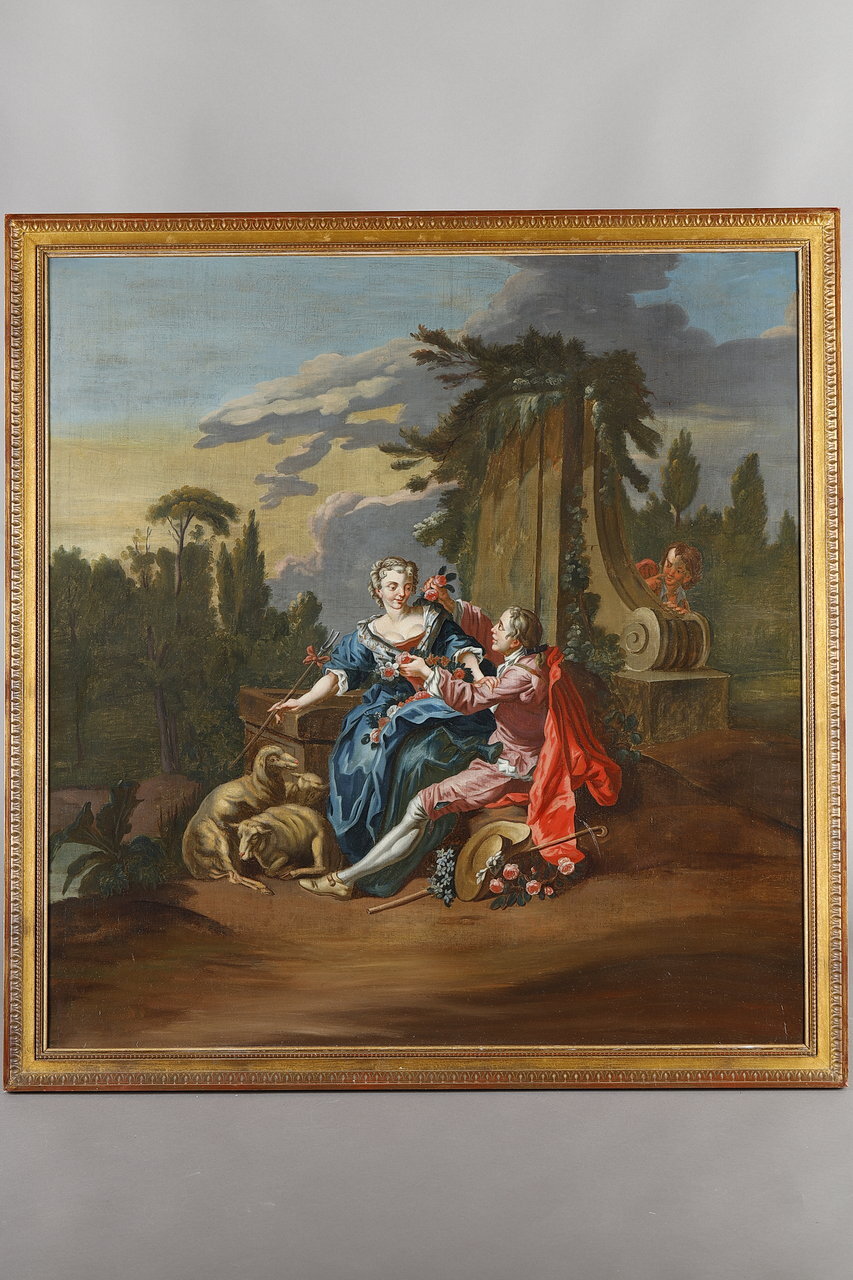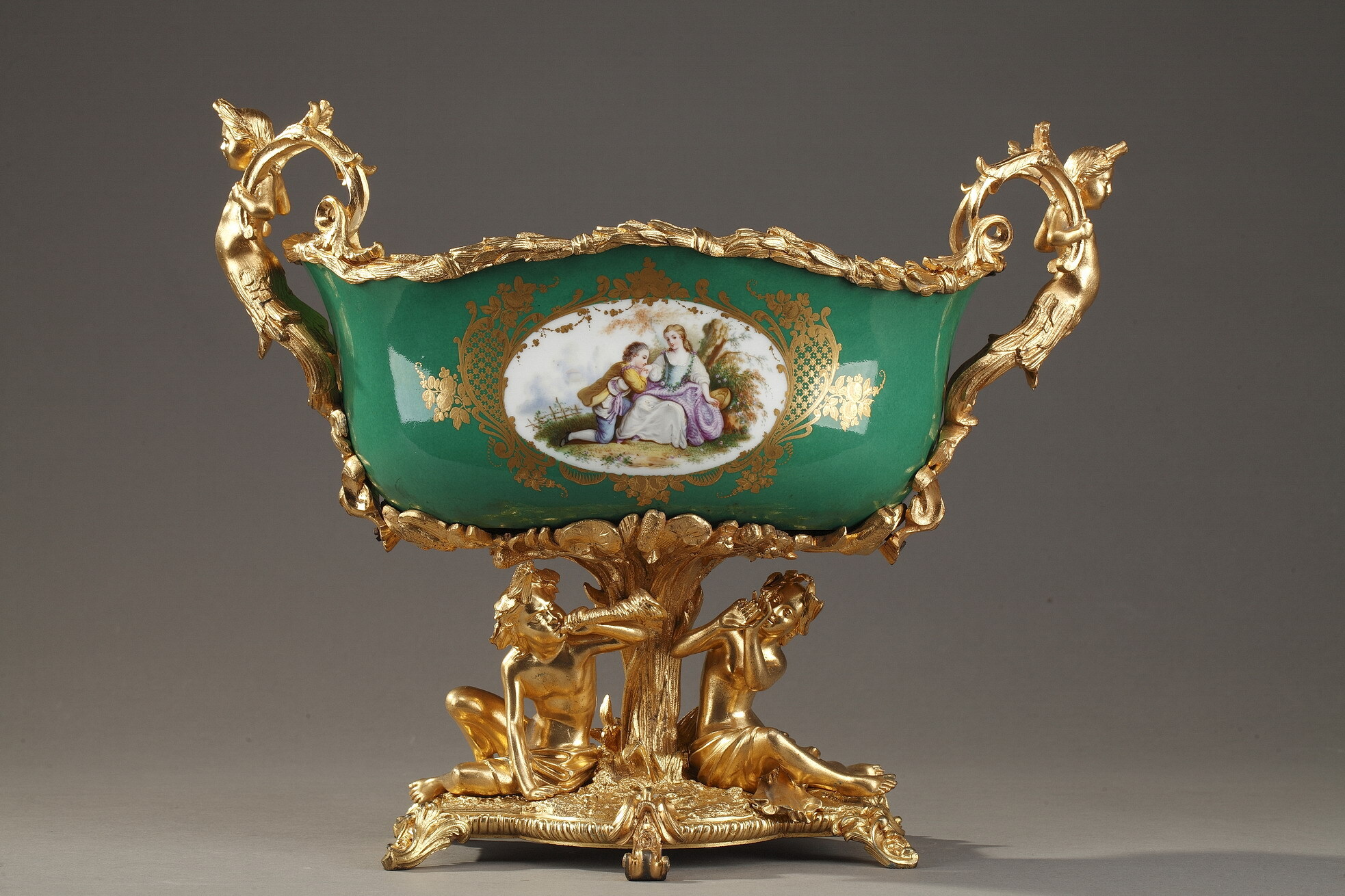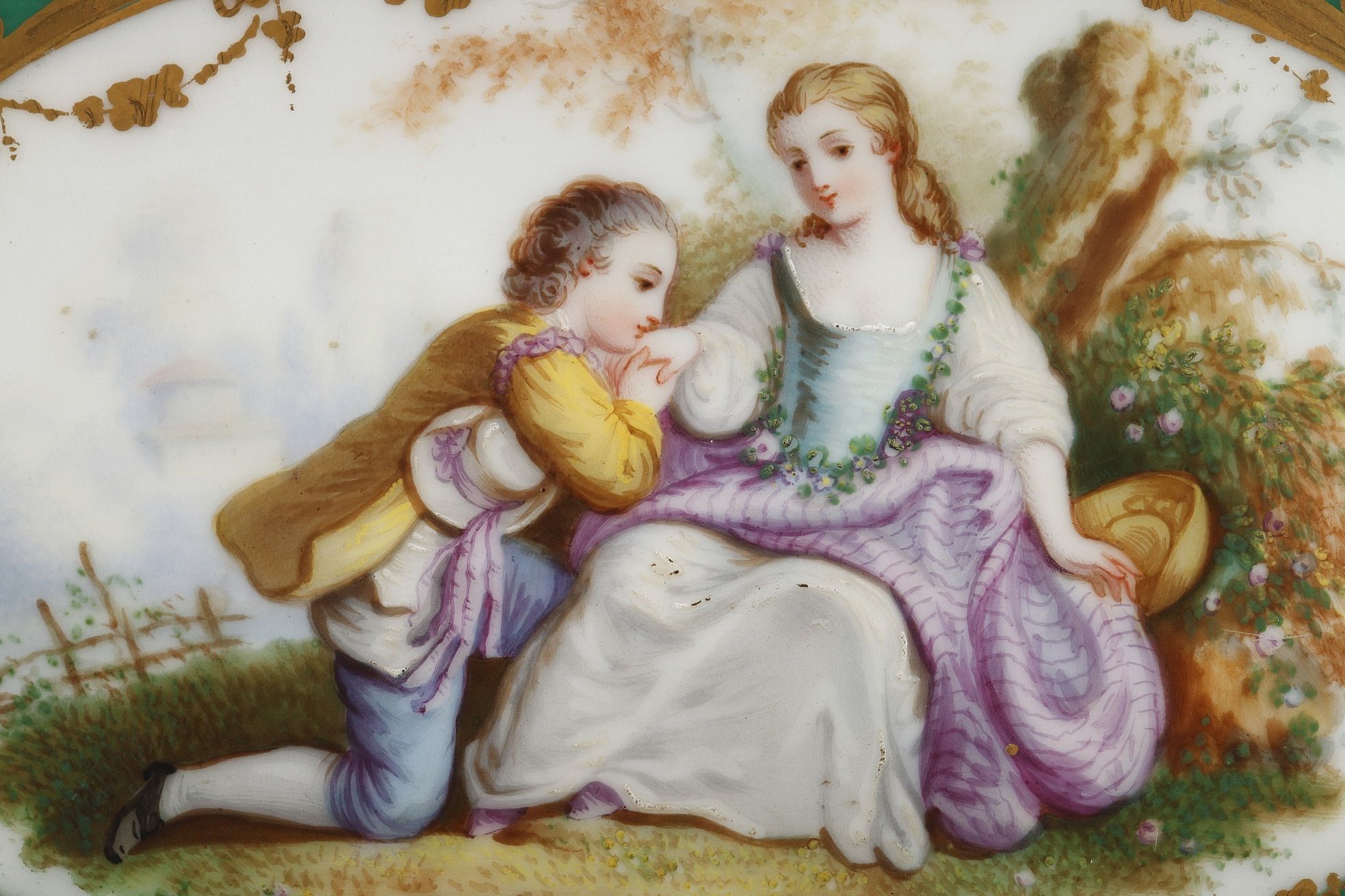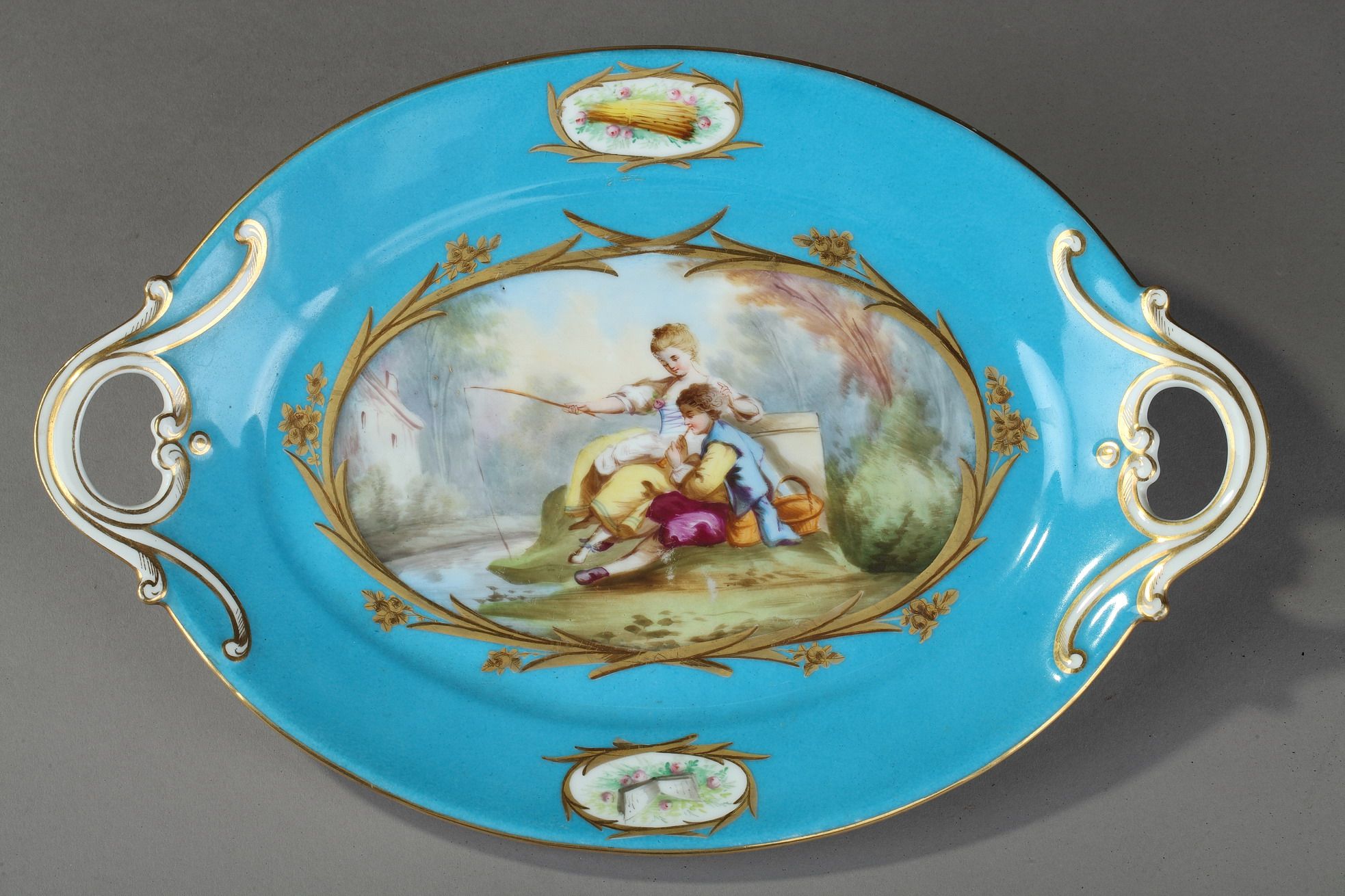The fêtes galantes in the era of Louis XV
15.09.21
You've surely seen them before, on porcelain, canvas, or even tapestry: these charming little couples courting each other in the countryside. But who are they? Why are they sitting on the ground in such elegant attire? Tired of the formality of the Baroque art of the previous period, a new era of lightheartedness dawned. The court left Versailles for Paris, a place conducive to greater freedom and joie de vivre, fostering romance. Let's revisit this 18th-century France, a time when life was seen through rose-colored glasses.
The fêtes galantes in major art
In the 17th century, genre painting, a great Venetian and Flemish tradition, was considered minor. It was seen as merely anecdotal scenes of everyday life, which did not appeal to the Academy. Scenes of love Antoine Watteau 's reception piece, The Pilgrimage to the Isle of Cythera, that things began to change. The Academy, recognizing his talent, refused to relegate him to a minor genre and decided to create the genre of the fête galante.
The aim is to depict a moment of social leisure among the aristocracy in a pastoral . Added to this is the strong element of seduction. Antoine Watteau no longer simply represents everyday life, but a lightheartedness that appeals both to private individuals, who provide the majority of the funding, and to the Academy of Fine Arts appointed by the government.
But what distinguishes the fête galante from other scenes of aristocratic life? The theme of romantic passion in bucolic settings provides a pretext for boldness and originality in the composition of the work. Artists play on the modernity of the clothing while integrating it into the timelessness of the setting. Watteau's works illustrate the fashions of his time. Art historians would later call the pleats in the backs of French-style dresses from this period "Watteau pleats," following his precise descriptions. These garments signify the high status of the protagonists. This allows aristocrats to recognize themselves in these leisurely and refined scenes.
We also notice a strong emphasis on theatricality and double entendre. Gallantry is adorned with sophisticated codes specific to the aristocracy. These codes determine who belongs to high society and who is excluded, even as the bourgeoisie begins to have the means to blend in with the nobility. To be a gallant gentleman is to know how to please in society through one's bearing, manners, and wit. Everything is a pretext for gallantry, from the movement of a fan to the placement of a beauty mark on a young woman's face. The codes are inscribed on everyday objects, from fans to the busks (wooden strips inserted at the front of bodices to maintain their rigidity) of whalebone corsets. This leads to a highly diverse education among aristocratic youth, but one that remains superficial. This education will strongly influence 19th-century dandyism
Not all these celebrations take place indoors. It would be inappropriate to be too forward in a drawing room or at a ball. It is during walks outdoors, far from the obligations of etiquette, that love can be most forward;
The Pastoral, or Loving Each Other in the Open Air
Attempting to connect with nature is a way to demonstrate erudition and knowledge of Jean-Jacques Rousseau's (1712-1778) writings. According to Rousseau, humankind is inherently good, and it is society that corrupts it. Thus, those in society closest to nature are considered respectable. This leads to a sentimentalized view of peasant life, which is seen as purer. Depicting shepherds provides an opportunity to express the weight of fate and emotions on people considered "simple" and "innocent." Indeed, the aristocracy, too far removed from nature, is criticized for vanity and lust rather than for accepting fate.
This idea is not new; the pastoral genre was popularized in literature as early as the 3rd century BC by Virgil in the Bucolics, but it truly gained momentum during the Italian Renaissance. In France, it was Honoré d'Urfé (1607-1628) who brought the pastoral genre to the forefront with his novel L'Astrée in 1607. The novel describes the adventures of young people whose noble ancestors chose to escape the wars and live in hamlets on the banks of the Lignon River.
Detail of a gallant scene on an antique porcelain and gilt bronze jardinière
The theme of the Pastoral in the visual arts, strictly speaking, emerged with the decoration of the Hôtel de Soubise in Paris by François Boucher in 1737-1738. He conceived scenes of carefree and joyful youth within an idealized image of peasant life. The shepherds and shepherdesses, dressed like lords and whose bare feet are never soiled, tend flocks requiring little care. They seem completely oblivious to the harsh conditions of rural life.
By surrounding oneself with works representing this ideal society—educated yet close to nature—one appropriates its virtues. Transposing a romantic scene into a bucolic landscape is a way of ensuring the sound foundation of the sentiments expressed.
This glorification of country life reached its zenith with Marie Antoinette . She commissioned Richard Mique to create a rural village for her, complete with thatched cottages and a working farm, on the outskirts of the Trianon. It included a barn, dairy, stable, pigsty, and henhouse. Legend has it that she "played at being a shepherdess," which isn't entirely accurate, as she primarily used the area for walks. Nevertheless, these structures demonstrate the significant appeal that the rural world and its activities held for aristocratic society.
The image of a Rococo lifestyle
After the death of Louis XIV, France yearned for a more carefree lifestyle. Governed by strict etiquette and embroiled in numerous wars, the nobility gained more freedom during the Regency (1715-1723), and morals became more relaxed. It was through the patronage of Madame de Pompadour Rococo art was defined . The color palette brightened, offering shades of pink, blue, and blond to reflect the court's joie de vivre. Pink, in particular, the color of the flower of the goddess Venus, gained prominence, as the marquise wore it at Versailles. Rococo became a way of life based on the refined pleasure of the senses and aesthetic satisfaction.
With this in mind, it spread to all kinds of media. The Sèvres manufactory (a royal manufactory since 1759) used the engravings and subjects of François Boucher, a protégé of Madame de Pompadour, for its porcelain creations. The pale complexions of the young women enhanced the whiteness of the porcelain itself. Between 1778 and 1797, a large number of pastoral themes appeared in biscuit porcelain, small unglazed figurines used as table decorations. This provided an opportunity to stimulate the imagination of the viewers and spark conversations among the guests. One noticed both the richness of the host's decor and their ability to see beyond the seemingly innocent scenes.
Blue porcelain bowl, in the style of Sèvres, 19th century
For make no mistake, courtship in the countryside isn't reserved solely for true love. The second half of the 18th century saw the rise of the concept of libertinism . The term already existed in the 17th century but primarily represented a freedom of thought and a certain fickleness in romantic feelings. From the reign of Louis XV , a king known for his bon vivant lifestyle and fondness for pleasure, it became synonymous with the pursuit of carnal delights. This led to a double standard in literary works, alternating between seemingly chaste scenes and explicit sexual connotations.
Shepherds playing the flute can both depict the ease of falling in love amidst a musical atmosphere surrounded by harmonious nature, and represent a sexual act for 18th-century society. The interplay of glances sometimes gives way to explicit gestures or revealing attire, as is the case in the biscuit porcelain hunting scene with a gallant couple from our collection.
The end of the party, the arrival of Neoclassicism
This perceived depravity of the aristocracy did not sit well with everyone, and by 1750, a movement began to emerge in opposition to Rococo art: Neoclassicism . Pastoral scenes continued to exist, but they took on a more virtuous tone. Gone were the embracing lovers; the depictions focused on the noble values of working the land. All that remained of the Rococo festivities was the setting of an Arcadia , an image of ancient Rome. Jean-Honoré Fragonard (1732-1806), a virtuoso of bucolic love, would bear the brunt of this shift in taste. His series of paintings for the Château de Louveciennes, commissioned by Madame du Barry , another mistress of Louis XV, depicting the stages of romantic engagement, was returned to him. In their place, the patron hung canvases by Joseph Marie Vien (1716-1809), whose style was far more Neoclassical.
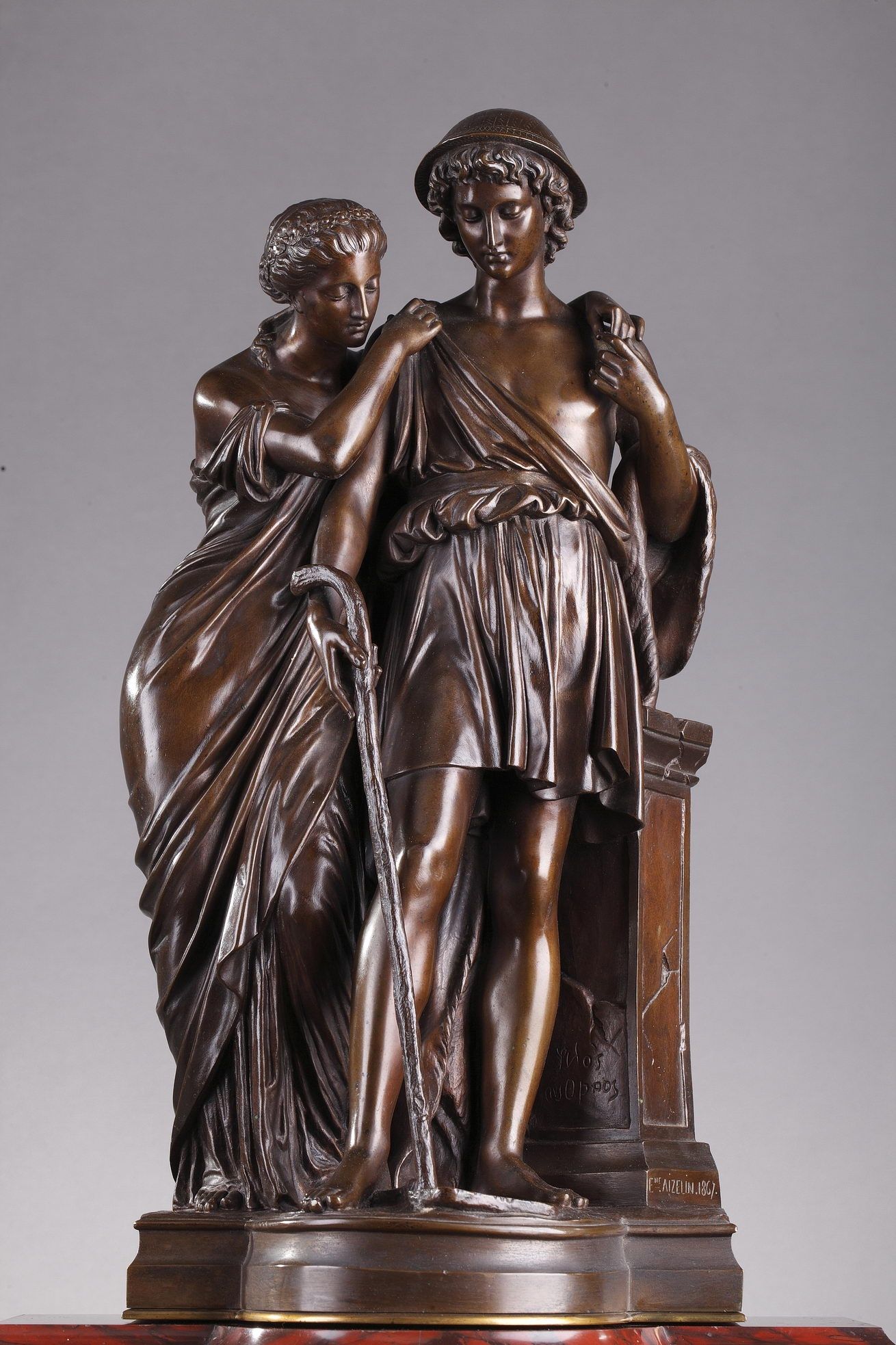 Arcadian Shepherds clock, 19th century, detail
Arcadian Shepherds clock, 19th century, detail
In the 1780s, there was a complete rejection of the Rococo style, deemed too frivolous and decadent. Moralizing history painting regained prominence over genre scenes. The color palette darkened, and pink was abandoned in favor of red, considered more serious. There was a desire to return to the origins of art following the archaeological discoveries of Pompeii and Herculaneum.


